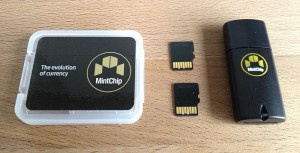On Friday, however, the Canadian government confirmed to the Wall Street Journal that the experiment was dead.
The Mint is currently working with the [Canadian] Department of Finance to explore divestiture options. The Mint is also in the process of completing development of MintChip to package the assets for divestiture.”
The system, based around a customized, secure smart-card chip, was always something of an experiment, and never gained much of a market share. Although there have been rumblings of a more bitcoin-like MintChip 2.0 as recently as September of last year, the end of the MintChip project does not come as a huge surprise.
Canada’s government, however, seems to be rapidly warming to bitcoin’s potential. As an official government project, the MintChip experiment may have played some role in this rapid adoption. Unlike the U.S. and other governments, Canada has been at least tinkering with the idea of adding a virtual currency component for almost as long as bitcoin has been on the radar of mainstream culture.
In last week’s 2014 Federal Budget Implementation Act, the Canadian government was already making moves to formalize regulation of bitcoin, applying cash-like transaction restrictions to sums greater than $10,000. Canada’s most established bitcoin exchange, the Vault of Satoshi, received a full Money Services Business license in late March, putting it on equal legal status with other currency exchanges in the country.














